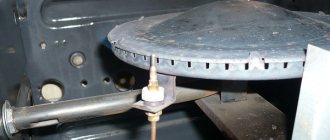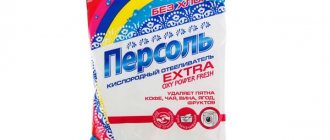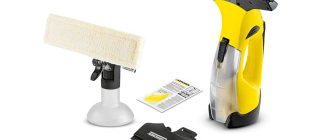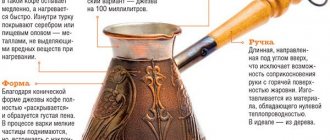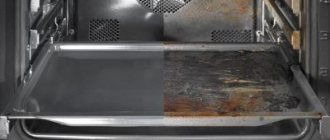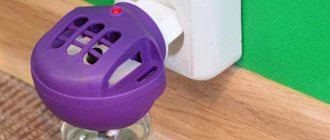The most modern and convenient development for the oven is the pyrolytic cleaning system. This function involves self-cleaning the oven from dirt. This function is present in electric oven models.
The cleaning system is produced by high heating temperature. This means that the oven capsule contains a heater made of durable metal, which heats the entire oven compartment over 460°. As a result, all food residues burn out and turn into ash. As a result, it is enough to remove the remaining debris from the oven box.
During burnout, an unpleasant burning smell is created in the oven, but due to the installed filtration system, it does not penetrate outside. The filter does not need to be cleaned or replaced; its shelf life is designed for the entire period of operation of this equipment.
Brief characteristics of the pyrolytic oven system
An oven with pyrolysis is an advantage of more expensive electric ovens. They are made from crucible steel. The stove door has three-layer, in some cases four-layer, heat-insulating glass.
A brief description of:
- the pyrolysis function in ovens provides ideal self-cleaning ability; in the end, you won’t have to scrub or wash anything;
- the oven cleaning process is performed by a separate independent program;
- During cleaning, the electric oven door is automatically locked and unlocked when the process is completed;
- The electric stove is cleaned within 90-150 minutes.
How has the function of pyrolysis changed over time?
Ovens with a pyrolysis function have evolved significantly since their inception. At the very beginning, models were produced that had 3 cleaning modes:
- Minimum – the fastest, for not too heavy dirt. It takes about 2 hours 15 minutes.
- Normal is the most popular mode, suitable for medium-difficult dirt. Duration - 2 hours 45 minutes.
- Intensive – for the most difficult cases, when a thick coating has formed on the oven walls. It is the longest - 3 hours 15 minutes.
The process itself is divided into the following stages:
- First, the oven is heated to a maximum temperature of 500°C (this takes less than an hour).
- The set temperature is maintained from one to three hours.
- Then the oven cools down.
Over time, manufacturers began to produce ovens, focusing on different consumer needs. Depending on how often housewives use this device, as well as what dishes they prefer to cook in it - vegetables or fatty meats - other cleaning modes have appeared. For example, the so-called “comfort pyrolysis”. It is more suitable for those who rarely use the oven and cook mainly various vegetable dishes or baked goods in it. The entire cleaning process is divided into two stages:
- The oven is preheated to 230°C. At this temperature, pre-firing takes place for the first 30 minutes.
- Then the temperature rises to 500°C, and more intensive cleaning begins, which lasts from one to three hours (depending on how dirty the oven is).
Later, ovens with a pyrolysis function began to be produced with a special catalytic filter, which contains an additional heating element. In such devices, the self-cleaning process proceeds as follows:
- Pre-firing.
- Pyrolysis at maximum temperature. In this case, the additional heating element heats up to 650°C. All organic contaminants that have accumulated in the filter are burned.
- The self-cleaning process ends after the filter has cooled down slightly.
Devices equipped with a catalytic filter are designed to save energy by quickly burning major contaminants.
There is another option for ovens that can significantly reduce power consumption during pyrolytic cleaning. Whirlpool the Sixth Sense sensor system. They capture carbon dioxide, which is released during the combustion of fat and other organic pollutants, and monitor its concentration. As soon as the oven walls are cleaned, the amount of carbon dioxide decreases and the appliance stops working. The pyrolysis process in such models lasts as long as it is really needed, without spending additional energy and time resources.
How to use the pyrolysis function in an oven?
To properly use the pyrolytic cleaning function in the oven, you must:
- Before cleaning, be sure to remove all metal partitions from the oven.
- Turn on the oven self-cleaning button.
- After completing the process, it is necessary to treat all the walls of the oven from the inside.
Important! To remove dust and burnt residues, use a damp cloth. It is recommended to carry out this operation every 100 hours of oven operation.
Pyrolysis or catalysis – which is better?
Let's conduct a comparative analysis based on several criteria. Let's start with the price: catalytic ones have a lower price. Compatibility: pyrolytic ones are only suitable for electric ovens. Disadvantages: in pyrolytic ovens, the outer walls get very hot and require a separate cleaning procedure. Sometimes an unpleasant odor appears. In catalytic ones, you have to clean the door manually.
Now we can draw conclusions. Firstly, those with cats who live in houses with gas need ovens with a catalytic cleaning method. They are also suitable for those who save on electricity. They are not demanding on the electrical network, so they are suitable for old houses.
But for those who do not like to spend extra effort on cleaning, pyrolytic ones are suitable.
For both types, the problem of cleaning removable internal elements: grates and baking trays remained unresolved. As usual, they will have to be taken to the sink and washed with cleaning products. The problem of case overheating was solved in more expensive models that use additional cooling. Although in any case, the air in the kitchen will become very hot. See also -
Review of the electric oven “Russian oven”
Positive traits
The pyrolytic purification system has quite a lot of positive qualities. Compared to catalytic and hydrolysis technologies, this is considered more effective.
- No need to use detergents.
- Gets rid of the heaviest contaminants: fat, dairy products, burnt food, etc.
- Cleaning is carried out for the entire interior of the oven. All hard-to-reach areas of the oven chamber are cleaned.
- No additional costs for materials are required: the electric oven has all safety and ventilation systems.
Oven with catalysis: cooking and cleaning
Catalytic ovens, convenient cleaning and time saving, but with the need to change components. The catalytic cleaning oven is mainly distinguished by the design of the internal space. Removable catalytic panels are attached to the walls. On which a special composition is applied. This is what cleans the oven. The composition is a porous material. These pores contain a special substance that absorbs dirt. Because of this, the oven takes on a somewhat unusual appearance. And the walls are noticeably rough to the touch. This technique allows the oven to clean itself even while cooking. At the same time, the dishes do not acquire any harmful properties or unpleasant odors.
Typically, temperatures above 140°C are required to activate the process. In the pores, contaminants are broken down into simple, harmless substances. They can then be easily wiped with a damp cloth. The panels themselves have a certain service life. And they have to be changed approximately every 5 years. Available in single-sided and double-sided versions. Determining whether the panel needs to be replaced is quite easy. This will be noticeable by the accumulation of contaminants. The replacement itself can be done independently and at home. Usually you literally need to unscrew a couple of bolts according to the instructions.
Benefits of catalytic cleaning
- the outer walls heat up in the same way as in conventional ovens;
- saving time due to cleaning at the time of cooking;
- Can also be used for gas ovens.
Disadvantages of catalytic purification
- availability of consumables – catalytic panels;
- it is also necessary to clean removable elements separately;
- The panels are not installed on the door; it must be cleaned using the standard method;
- For complex stains, several procedures are required.
See also -
Pros and cons of an oven with catalytic cleaning
Negative qualities
The pyrolysis function in the oven has a number of disadvantages. The most important of them is the high cost of the stove. Also, an oven with this option does not save the user from additional cleaning; all residues are removed manually.
Unfortunately, the pyrolysis function is only available in electric ovens. The downside to this is that these electronics consume a lot of electricity. And since the pyrolysis option involves heating the oven to a high temperature, electricity will be consumed at the maximum rate.
All oven interiors are cleaned by hand. Racks and trays must be removed during cleaning. And the last disadvantage: the ventilation system does not always cope with its job. Foreign odors may appear both during the self-cleaning period and after opening the oven.
What is pyrolysis?
Pyrolysis is the name given to cleaning a surface from greasy deposits using high temperatures. Ovens equipped with this function can heat up to 500°C (and individual parts - up to 650°C). Unlike catalytic cleaning, which only applies to the side and back walls, during pyrolysis all internal surfaces of the oven are cleaned. Such devices operate only on electricity.
Oven cleaning instructions
Follow these steps in sequence:
- First of all, you need to prepare the oven for cleaning. To do this, you need to remove everything that is stored inside (pans, baking dishes, etc.), as well as remove baking sheets and racks. They cannot be pyrolyzed, but can be washed by hand or in the dishwasher.
- After the oven is freed from all unnecessary things, you need to close the door tightly and turn on the cleaning mode. During the procedure, you must not open the door, as the temperature inside is too high. However, many modern models are equipped with a special locking function that prevents the oven from being opened until the process is completed.
- If there is a hood installed in the kitchen, it is recommended to turn it on during cleaning to prevent the spread of unpleasant odors throughout the apartment.
- When the pyrolytic cleaning program comes to an end, the oven must be cooled to a safe temperature, after which it is enough to simply wipe the internal surfaces with a damp cloth to remove any soot that has formed.
Pyrolytic cleaning function: operating principle
A pyrolytic oven is also called a pyrolysis oven. Pyrolysis is a combustion process in which droplets of fat, milk, sugar syrup, crumbs and stuck-on pieces of food left on the inner walls are completely burned and turned into soot. The pyrolysis process occurs at very high temperatures (up to 500 °C) and ensures effective cleaning of all types of contaminants.
Pyrolytic oven cleaning takes from 1.5 to 2.5 hours. Most of this time is spent cooling the oven. It is recommended to carry out such cleaning approximately once a month; in case of heavy contamination, you can sometimes start the process more often.
Pyrolytic cleaning - what is it?
The pyrolytic cleaning function involves increasing the temperature in the oven to 500°C. Hot air burns plaque on the inner surfaces of the oven. This effect turns plaque on the walls and door into a thin film, which can be easily removed with a damp cloth.
Ovens with a pyrolytic cleaning function are produced by such global brands as Bosch, Ariston, Siemens, Miele.
Burning fat and food particles in the oven does not occur without producing smoke and a burning smell. The engineers made sure that smoke did not fill the apartment during cleaning by equipping the oven with a special filter. The manufacturer has provided that the filter be connected to a vent in the kitchen.
In any case, a percentage of the smoke from the oven will leak into the room, so during cleaning, users are advised to turn on the hood or open a window. If you use the function regularly (once a month), less smoke will be released during cleaning.
Ovens with a pyrolytic cleaning function are made of high-strength materials. They are able to withstand high temperatures without undergoing any changes. The factory installs 3 or 4 heat-resistant glasses in the door. In addition, such ovens have additional thermal insulation and a cooling system, which prevents them from heating up outside to critical temperatures.
What is the essence of pyrolysis?
Pyrolytic oven cleaning - what is it? Pyrolysis is a special method of self-cleaning all the “insides” of an electric oven from carbon deposits and dirt. It lies in the fact that when the temperature inside the oven rises to 500 degrees and there is a lack of oxygen, a chemical reaction takes place, during which contaminants literally break down into molecules without any cleaning agents. After this, all that remains is to sweep away and remove the resulting ash. That is, you don’t have to spend hours scrubbing off everything that’s burned, stuck, and built up on the walls of the oven.
But in any family they prepare not only baked goods, but also meat dishes with cheese, mayonnaise, fat, sauces, which inevitably splash and accumulate inside the oven. The pyrolysis cleaning system makes it possible to solve this problem without the direct participation of the housewife - she just needs to press a button.
In addition, pyrolysis does not have any harmful effects on people, animals, or the environment.
Types of self-cleaning functions
Pyrolytic
This method is considered the most effective. During the pyrolysis process, the oven warms up to 500ºC, and all organic matter deposited on the walls turns into ash .
To achieve this effect, heat-resistant materials are needed, which significantly increases the cost of the device.
Before purchasing an oven with a built-in pyrolysis function, you need to consider some technical features:
- special electrical wiring with a safety margin of 6 kW will be required;
- pyrolysis requires a lot of electricity;
- despite the thermal insulation from the outside, the oven heats up to 90ºС;
- if there is a lot of dirt inside the oven, a lot of smoke and burning will come out during pyrolysis;
- Do not place the oven close to kitchen furniture and a refrigerator, which may be damaged due to the strong heating of the external surface of the device.
